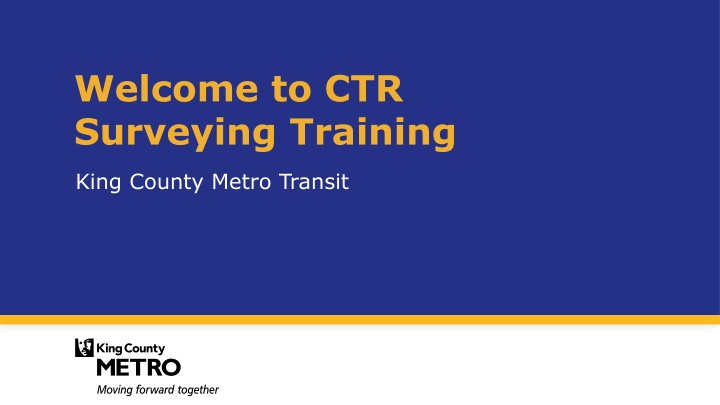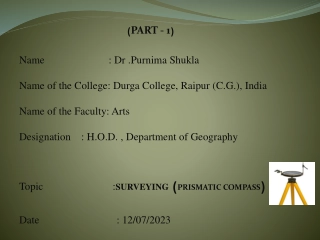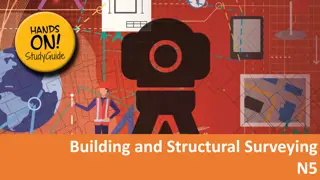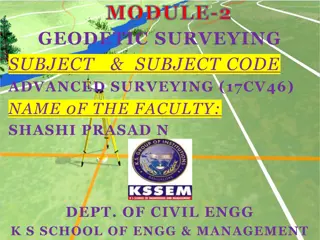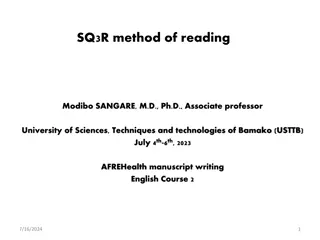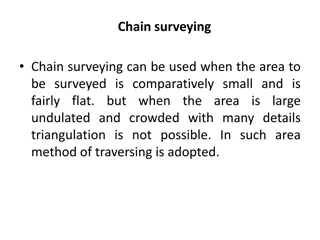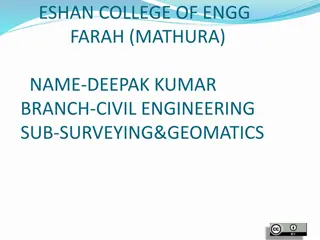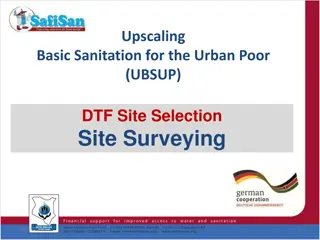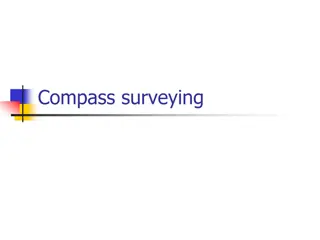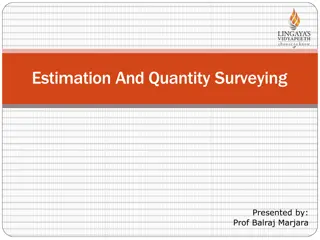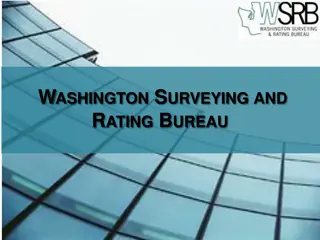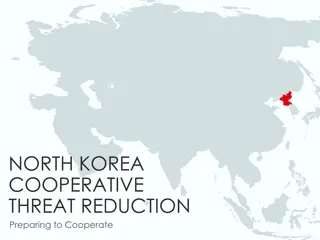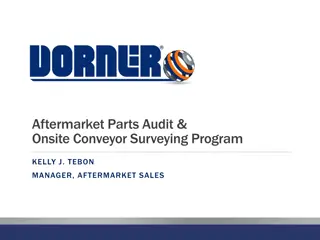Welcome to CTR Surveying Training
The CTR Surveying Training provides essential insights into the Washington State's Commute Trip Reduction (CTR) law, employer responsibilities, surveying methods, and best practices for reducing drive-alone trips. From understanding CTR to conducting employee surveys, this training equips employers with the knowledge and tools to promote alternative commuting options and support environmental sustainability. Dive into the agenda to learn about CTR, surveying criteria, conducting surveys, and post-survey actions to enhance your CTR program effectively.
Download Presentation

Please find below an Image/Link to download the presentation.
The content on the website is provided AS IS for your information and personal use only. It may not be sold, licensed, or shared on other websites without obtaining consent from the author.If you encounter any issues during the download, it is possible that the publisher has removed the file from their server.
You are allowed to download the files provided on this website for personal or commercial use, subject to the condition that they are used lawfully. All files are the property of their respective owners.
The content on the website is provided AS IS for your information and personal use only. It may not be sold, licensed, or shared on other websites without obtaining consent from the author.
E N D
Presentation Transcript
Welcome to CTR Surveying Training King County Metro Transit
Agenda 1. Welcome 2. What is Commute Trip Reduction (CTR) 3. Why are you surveying your employees? 4. Who do I survey? 5. Methods of surveying 6. Conducting your survey 7. Post survey
What is CTR? If your worksite has 100 or more employees your company may be affected by Washington State's Commute Trip Reduction (CTR) law. CTR protects our environment by encouraging employers and employees to find alternatives to driving alone to work. Large employers play a critical role in reducing drive-alone trips and promoting transit, biking, walking, teleworking and alternative work schedules. 3
Who and why are we surveying? Washington State s Commute Trip Reduction (CTR) Law was passed by the Legislature in 1991 with goals to improve air quality, reduce traffic congestion, and reduce the consumption of petroleum fuels through employer-based programs that encourage the use of alternatives to driving alone. Alternatives include riding the bus or train, carpooling, vanpooling, bicycling, walking, working a compressed work week or teleworking. Q: Who do I survey? A: 1) Everyone OR 2) Only CTR affected employees, who are those that: Work two or more weekdays In a position intended to last at least 12 continuous months Employees working at least 35 hours/week Beginning work between 6-9 AM
Getting your survey set up Q: When should I conduct our survey? A: Every jurisdiction is assigned a month in which to conduct their surveys. You will be given the option to select the week you want to conduct the survey. Best practices: Do not survey immediately before or after a holiday Allow two weeks to prepare before beginning your survey
Method of surveying Q: How can I survey my employees? A: You can either use electronic or paper surveys depending on your company s needs Best practices: paper Good for worksites with employees without email or computer access You are responsible for distributing and collecting surveys It s best to do these together at an event or meeting to make sure they are turned in Best practices: electronic Saves time and paper Easy for employee s to complete when they have time Survey can be amended to include some supplemental questions that you may want 6
Conducting your survey Messaging: 1. Buy-in from all levels of the organization is important, a message from your executive management team can be effective in encouraging your staff. 2. Be prepared to survey using posters, flyers, intranet announcements, and team meetings so that your employees are prepared to complete the survey by the deadline. 3. Some workplaces find incentives such as small gift cards, or food to be effective in driving survey completion.
Conducting your survey During the survey window: 1. Make sure to check in to see what percent of the surveys have been completed so that you can hit (and pass) the minimum requirements 2. Send out a reminder to fill out the survey at least once a week, or more if the completion rate is low to moderate 3. A follow up email from executive management may be a good way to ensure survey completion 8
Post survey Q: What will I find out from doing this survey? A: Roughly two weeks after the survey closes you will receive information about how your employees get to work, what percent don t drive to work alone (NDAT), Vehicle Miles Traveled (VMT), and response rate. Q: Will we know if we passed ? A: Yes, you will find out how you matched up to your jurisdictions goals, if you haven t met them we will work with you to find ways to improve.
We appreciate you! Thank you for attending this training, if you have any questions, concerns, or feedback please let us know! Jeanne Suleiman (Auburn, Burien, Des Moines, Federal Way, SeaTac, Shoreline, and Unincorporated King County) - jsuleiman@kingcounty.gov; (206) 263-3381 Rocco DeVito (Bellevue, Issaquah, Kirkland, and Woodinville) - rdevito@kingcounty.gov; (206) 263-3391 10
